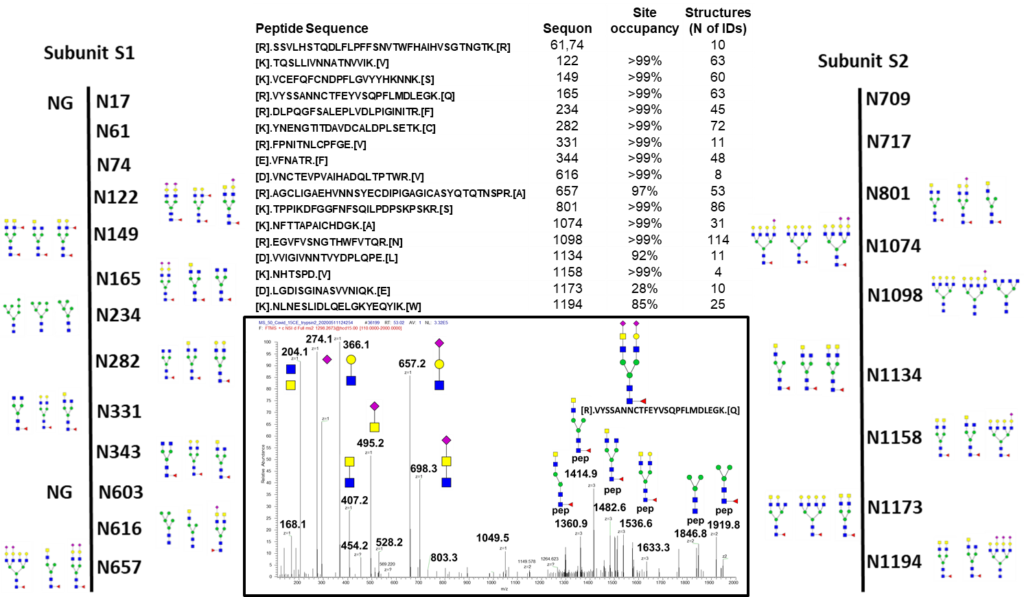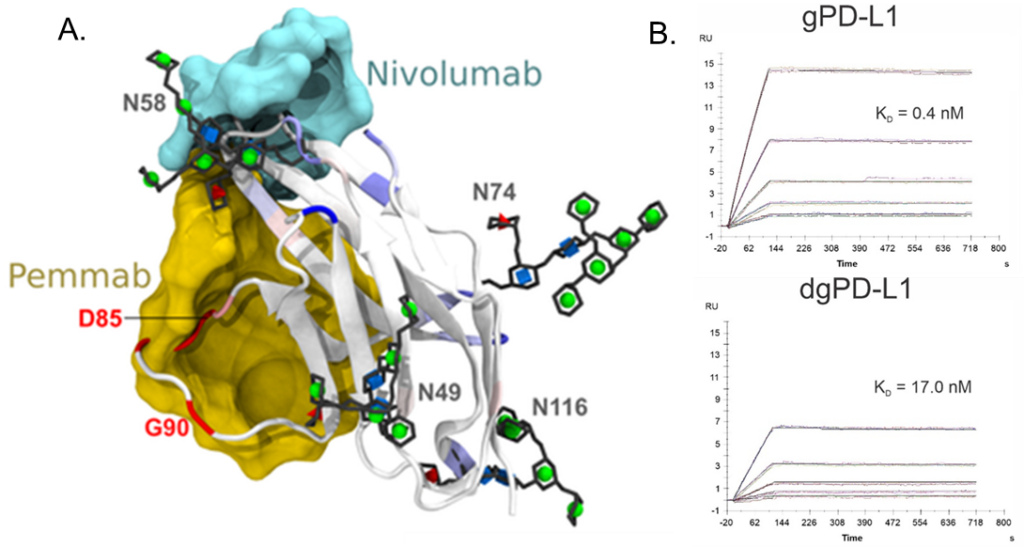Glycobiology of Immune Responses – Checkpoints, Immunoglobulins, Covid19
Posted in Projects
Glycoscience is a cornerstone of modern immunology. Glycan/glycoprotein structures and their interactions with carbohydrate recognition proteins called lectins define frequently what represents foreign or self antigens, adjust many interactions at the immunological synapse, and regulate functional responses of the immune system. One of the well studies examples of an immunological function regulated by glycans is the binding of the Fc region of immunoglobulins to their receptors which depends directly on the type of N-glycans on the Fc. These interactions define efficiency of the humoral immune responses, regulate interactions with pathogens or autoimmune disease processes, as well as efficacy of therapeutic antibodies. We continue to develop assays for the quantification of immunoglobulin glycoforms and study their function in the context of viral infections, including HIV, HCV, or the SARS-CoV-2 associated diseases.

Figure 1. Glycosylation of antibodies is measured efficiently by LC-MS/MS assays and defines effectiveness of the humoral immune responses. Sanda et al (2016) Anal Chem. 88, 10118-10125; Yuan et al (2015) J.Proteomics 116, 24-33.
Besides regulation of the host immune responses, glycans directly modify viruses and other pathogens. The viruses use the host glycosylation machinery to engineer their own glycoproteins including the HCV envelope glycoproteins or the HIV GP120. These immune targets and vaccine epitopes on the viral glycoproteins are an active area of research. Most recently, the SARS-CoV-2 spike glycoprotein has become a center of intense research. Our analysis of the spike glycoprotein shows that almost all of its 22 NxS/T sequons are N-glycosylated and that the N-glycans display structural motives that should be considered in vaccine design and functional studies of the virus. In addition, we described for the first time a series of O-glycopeptides on the SARS-CoV-2 spike glycoprotein, including novel epitopes associated with the new strain of the virus (https://www.biorxiv.org/content/10.1101/2020.07.03.187179v1). We now pursue studies of the impact of the glycans on the SARS-CoV-2 maturation, interactions, and progression of the covid19.

Figure 2. N-glycopeptides of the SARS-CoV-2 Spike Glycoprotein determined by our optimized LC-MS/MS analyses on the Orbitrap Fusion Lumos.
Another topic of active research at the CTGRC is the glycobiology of the immune checkpoints. This family of cell surface receptors regulates interactions at the immunological synapse in a glyco-dependent fashion. We study how the glycans modify the functional interactions of the checkpoints or their interactions with therapeutic antibodies (https://www.biorxiv.org/content/10.1101/2020.07.03.187179v1) which may prove important for optimal therapeutic interventions.

Figure 3. A. Model of the interaction of glycosylated PD-1 with Nivolumab and Pembrolizumab shows that the N-glycans affect the binding interface; B. Avelumab binds glycosylated PD-L1 stronger than the PD-L1 deglycosylated with PNGase.
